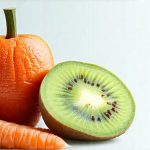Constipation is often viewed as an inconvenience – a temporary discomfort easily remedied with over-the-counter solutions. However, chronic constipation can significantly impact quality of life, leading to bloating, abdominal pain, fatigue, and even psychological distress. While many factors contribute to this common ailment—hydration levels, physical activity, stress, certain medications—a surprisingly overlooked cause is the composition of our diet itself, specifically a pattern of consuming monotonous, low-color meals. We often focus on what we’re cutting out (sugar, fat), but less frequently consider what we aren’t including: the diversity of nutrients and fiber crucial for optimal digestive health. This article will delve into how a visually bland diet can contribute to constipation and explore strategies for incorporating more vibrant, gut-friendly foods.
The connection between our food’s appearance and its impact on digestion isn’t merely aesthetic. Foods with a wide range of colors typically signal a rich content of phytonutrients – plant compounds that not only provide antioxidants but also influence the microbiome, promote healthy bowel movements, and support overall gut function. A diet consistently lacking these colorful components—think beige foods like white bread, processed cereals, pasta, peeled potatoes, and chicken breast—tends to be deficient in essential fiber types and often lacks the diversity needed for a thriving digestive system. This isn’t about aesthetic preference so much as recognizing that color is a visual cue for nutritional density. When our plates consistently resemble shades of white or pale yellow, we are likely missing out on key elements required for regular bowel function. If you frequently find yourself struggling with this, it may be time to look at bathroom disruption as a potential cause.
The Role of Fiber and Microbial Diversity
Fiber is the cornerstone of healthy digestion. It adds bulk to stool, making it easier to pass through the digestive tract, and also feeds beneficial bacteria in our gut. However, not all fiber is created equal. There are two main types: soluble and insoluble. Insoluble fiber – found abundantly in whole grains, vegetables with skins, and bran – increases stool bulk and speeds up transit time. Soluble fiber – present in oats, beans, apples, and citrus fruits—dissolves in water to form a gel-like substance, softening stool and regulating bowel movements. A monotonous diet often lacks both types of fiber sufficiently. It’s easy for beige foods to be low in total fiber content but even when present, the limited variety restricts the range of fibers reaching your gut. You might also find that constipation onset is related to dietary choices.
Crucially, fiber isn’t just about bulk; it’s about feeding our gut microbiome. A diverse and thriving community of gut bacteria is essential for breaking down food, synthesizing vitamins, strengthening the immune system, and regulating bowel movements. A diet limited in color usually means a limitation in the prebiotics—the food source for these beneficial bacteria. Prebiotics are found in foods like garlic, onions, leeks, asparagus, bananas, and oats – all of which offer vibrant colors and nutritional complexity that are often missing from monotonous meal plans. Without adequate prebiotic intake, the microbiome becomes less diverse and effective, potentially leading to constipation and other health issues. In some cases, cramping may also be a symptom.
A lack of dietary diversity impacts not only fiber intake but also the range of nutrients available for microbial fermentation. Different bacteria thrive on different compounds; a varied diet provides them with the resources they need to flourish. This complex interplay between food, microbes, and bowel function highlights why simply increasing fiber isn’t always enough – diversity is key. When gut bacteria are starved of essential nutrients, their ability to produce short-chain fatty acids (SCFAs) – vital for gut health and motility—is compromised.
Identifying Monotonous Eating Patterns
Recognizing a monotonous diet is the first step toward addressing constipation related to it. It’s surprisingly easy to fall into these patterns without realizing it. Consider your typical weekly grocery list. Is it dominated by beige or pale-colored foods? Do you frequently choose refined grains over whole grains? Are fruits and vegetables limited to just a few varieties, often those with milder colors like bananas and apples? If so, you might be unintentionally contributing to digestive issues.
- A common example is breakfast consisting primarily of white toast with butter or cereal made from refined grains.
- Lunch might involve a chicken breast sandwich on white bread with lettuce—a minimal color palette.
- Dinner could be pasta with a cream sauce and perhaps some steamed potatoes, again lacking in vibrant hues.
These patterns aren’t inherently bad but demonstrate a lack of diversity. They represent a missed opportunity to nourish the gut microbiome and support healthy digestion. Another telltale sign is relying heavily on processed foods, which are often stripped of fiber and essential nutrients, even if they appear visually appealing through artificial coloring or flavoring. The goal isn’t necessarily to eliminate these items entirely but rather to balance them with more nutrient-rich, colorful alternatives. You may experience bathroom instability as a result of this.
Incorporating Color Through Simple Swaps
Transforming your diet doesn’t require drastic changes or restrictive plans. Small, incremental swaps can make a significant difference. Begin by consciously adding one colorful element to each meal. Instead of white rice, choose brown rice or quinoa. Replace white bread with whole-wheat bread or sourdough. Add spinach to your omelet or berries to your yogurt. These small steps gradually increase fiber intake and introduce more nutrients for the gut microbiome.
Here’s a step-by-step approach:
1. Assess: Review your current eating habits and identify areas where color is lacking.
2. Swap: Replace one beige food with a colorful alternative at each meal.
3. Experiment: Explore new fruits, vegetables, and whole grains to find options you enjoy.
4. Increase Variety: Aim for a rainbow of colors on your plate—red peppers, orange carrots, green broccoli, purple cabbage, yellow squash – each offering unique nutrients and benefits.
Don’t underestimate the power of spices and herbs! Turmeric, ginger, cinnamon, and chili powder not only add flavor but also provide anti-inflammatory properties that can support gut health. Remember, consistency is key. Making these changes gradually will help you establish sustainable habits that promote both digestive regularity and overall well-being. If you struggle to maintain consistent eating habits after returning from travel, constipation may occur.
Beyond Food: Hydration and Movement
While dietary diversity is crucial, it’s important to remember that constipation is often multifactorial. Adequate hydration plays a vital role in softening stool and facilitating bowel movements. Aim for at least eight glasses of water per day, and consider incorporating hydrating foods like cucumbers, watermelon, and celery into your diet. Furthermore, regular physical activity stimulates intestinal motility – the movement of food through the digestive tract.
- Even a short walk each day can significantly improve bowel function.
- Incorporate strength training to build core muscles that support digestion.
- Avoid prolonged periods of sitting, as this can slow down gut transit time.
These lifestyle factors work synergistically with dietary changes to create a holistic approach to digestive health. It’s not simply about adding color to your plate; it’s about fostering a lifestyle that supports optimal gut function and overall well-being. Remember to consult with a healthcare professional if constipation persists or is accompanied by other concerning symptoms, as this could indicate an underlying medical condition requiring further evaluation. You may also find food combining can play a role in digestive health. Finally, remember that repetitive low-fiber meals can also contribute to constipation.


















